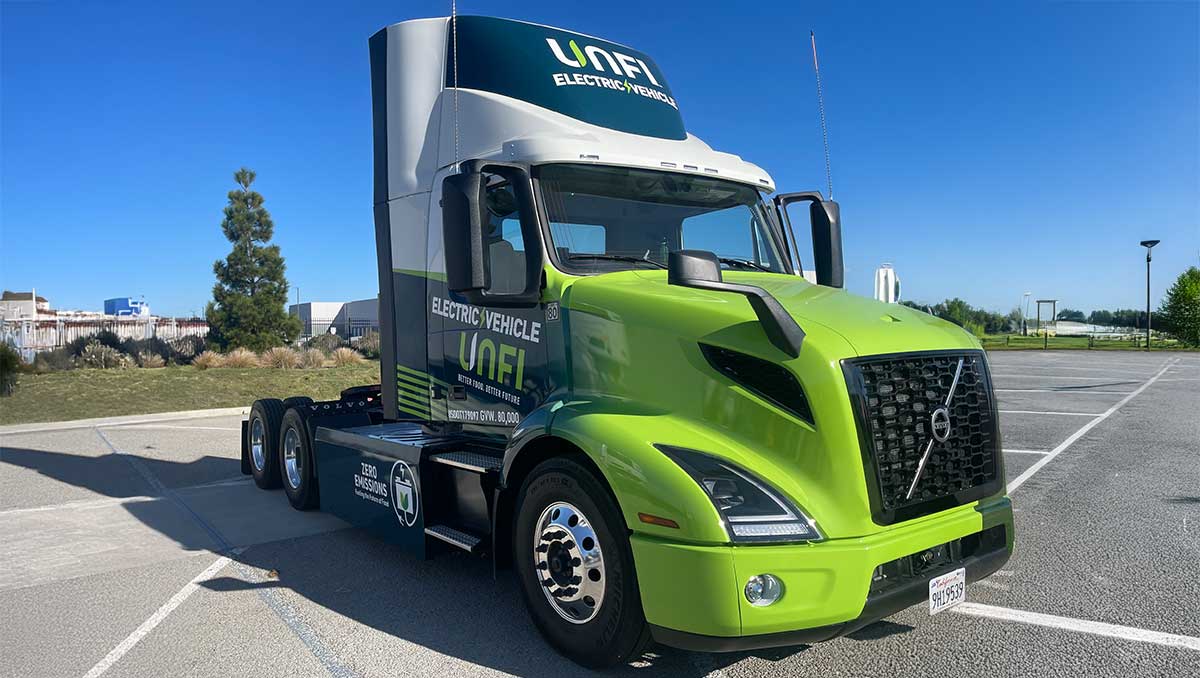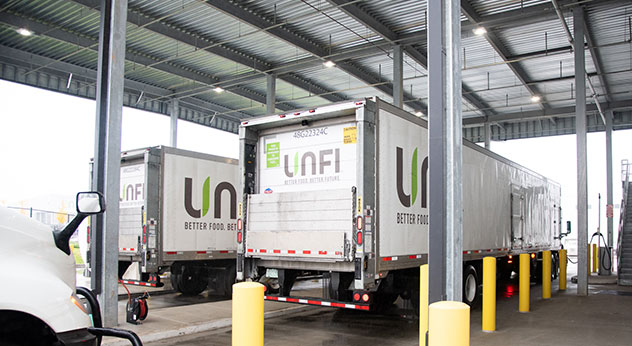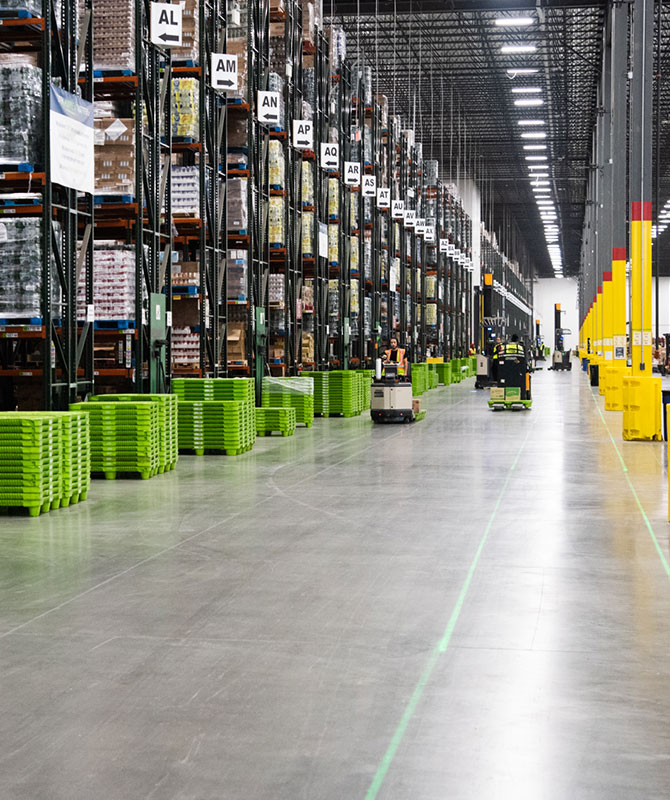Efficient & Sustainable Operations
Maximizing resources to deliver better value is one of our four impact pillars creating operational efficiencies while reducing our environmental footprint across our distribution network.
Read the latest reportAchieving Excellence Through Sustainable Business Operations
Efficient operations help maximize our resources to reduce emissions and operating costs while improving processes. This work comes to life through our renewable energy initiatives, fleet electrification efforts and waste diversion programs. From solar arrays to donation programs, efficient and sustainable business operations create compound benefits—cutting costs, reducing emissions and building the resilient infrastructure our partners depend on.

Maximizing Impact Through Resource Optimization
Every efficiency gain multiplies across our network: each kilowatt saved, mile optimized and pound diverted from landfills reduces our costs while protecting natural resources. These operational improvements position us as the partner retailers trust to meet their environmental commitments while building safer, more sustainable workplaces for our associates. This is central to our approach to operational energy management.
Explore the Topics Covered
Three priorities guide operational efficiency: climate change mitigation and adaptation, energy use and waste generation and diversion.

-
Climate Mitigation & Adaptation in our Operations
We are working to reduce emissions from our facilities and fleet. This operational lens targets direct and indirect emissions reductions that can cut utility and fuel costs, increase resilience and support continuous service during disruptions.
-
Energy Use
By optimizing our energy consumption, we reduce emissions from our facilities while increasing cost savings, improving cash flow and maximizing equipment operating time. Projects like our Riverside solar array that will meet 80% of that DC's energy needs help reduce our carbon footprint and operating costs while maximizing equipment uptime and improving cash flow across our network.
-
Waste Generation and Diversion
We pursue zero waste to landfill from our distribution centers through comprehensive salvage, recycling and donation programs. Through our enhanced salvage program and robust partnerships with community food banks, we route excess inventory away from the landfill – feeding communities while promoting a culture of food waste reduction and sustainability.
Our Goals

Reduce Scope 1 and 3 heavy freight well-to-wheel GHG emissions from transportation by 38% per tonne-kilometer by the end of FY2030.

Achieve zero waste to landfills from distribution centers by 2030.

Reduce absolute Scope 1 and 2 GHG emissions from all other emission sources by 50% by the end of FY2030.
Our Fiscal 2025 Highlights
decrease in energy intensity compared to prior year
of metric tons of non-food materials recycled
of electric and hybrid trailers in our fleet
Continue Exploring Our Impact
Discover how we're creating value across our business through our commitments to Resilient Supply Chain, Thriving Associates and Nourished Communities.
Explore more Impact Pillars

